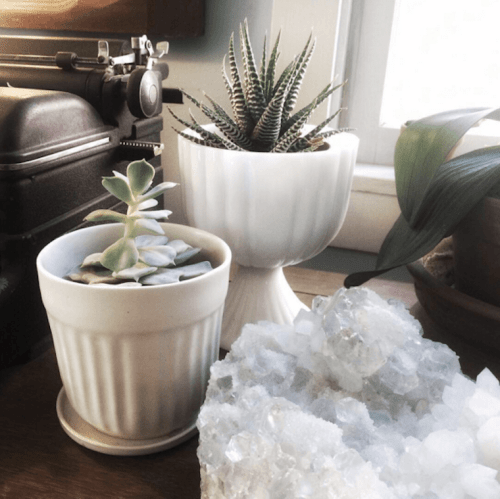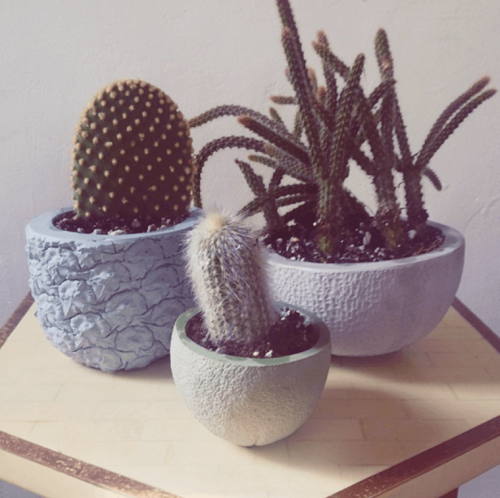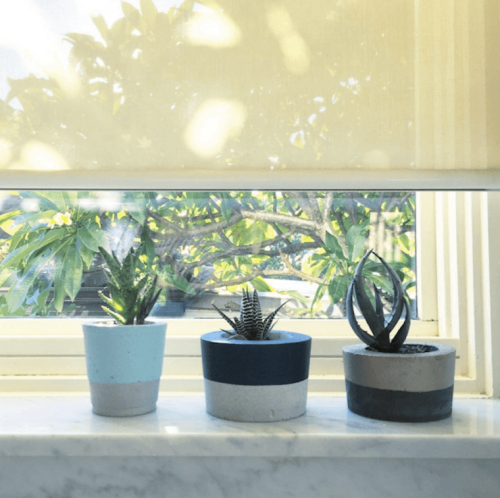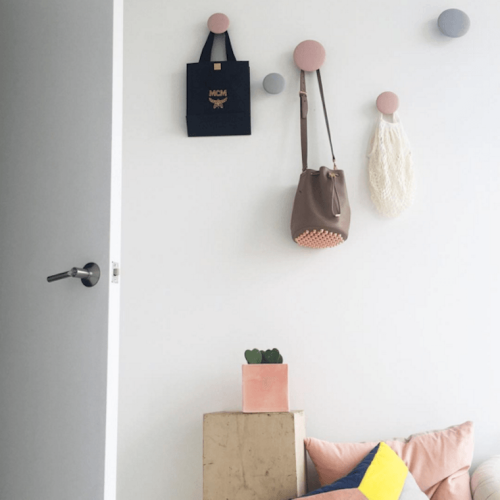The Plus Factor: And why there are indoor plants in our logo
Here's how to get a greener thumb with the cutest apartment-sized plants and pots—and lots of care tips. Consider this your indoor plant shopping guide.

Well+Good is your healthiest relationship, hooking you up with the best, most interesting things/people/leggings in wellness. And nothing gets at this concept better than the plus-sign in our logo, which acts like a gallery window where we showcase the most exciting, transformative objects and ideas that add wellness to your life. This week, we’re all about indoor gardens and the power they have over our homes (and our Instagram feeds) and possibly even the planet.
We’re going to go out on a limb and say it: plants are the superheroes of the natural world. Not only are they extremely rich in nutrients and an essential part of our diets, but they’re good for our mental—and environmental—health as well. Research has shown that they boost your mood, increase air quality, and act as purifiers, ridding the space around them of harmful toxins.
Yet sometimes, especially when you live in a concrete jungle, it can seem almost impossible to get enough plants in our lives—which might explain the recent obsession with all things relating to indoor planters—and not just during Earth Day, but year-round.

Now plant life and the pretty pottery it’s often displayed in is the must-have home decor of the moment—with a fanbase to match. The fig tree is practically a Pinterest board prerequisite, and millennials namedrop ceramicists as if they were some new buzzy band, fill globe-shape terrarium with succulents, or grow herb gardens on coffee tables (courtesy of Ikea’s super chic hydroponic option). Even Lena Dunham has given the indoor planter her stamp of approval.
Oh, and let’s not forget #plantshelfies—yes, that’s definitely a thing—allowing anyone with a square foot of space to stake claim on a garden of their own. And we think that’s a brilliant trend.
While a stylish planter certainly helps improve your personal ecosystem, it’s also a way to proclaim your support of all things earth-friendly. “The wonderful thing about planters is that they are recyclable,” says Erin Marino of The Sill, a super-cool plant shop on New York City’s Lower East Side. “When your plant outgrows it, or dies, you can pot a new plant into that same planter.” So they’re, like, really green.
Ready to get dirty indoors? In the spirit of Earth Day, we spoke with the pros at The Sill, along with the founders of Brooklyn and Chicago-based garden store Sprout Home (who just published Rooted in Design, a guide to getting creative with your indoor planting).
Get expert tips on choosing the perfect planter, upkeeping your new leafy BFF, and more. Go on, invite Mother Nature in. We have.

Tips for choosing the perfect planter:
1. Be as picky as Goldilocks
When it comes to picking out the size of your planter, it’s really a game of Goldilocks—you don’t want it too large or too small, but just right. A planter that’s not-quite-proportional to the plant itself could lead to over-watering problems or stunted growth. “We recommend picking a planter for tabletop plants that is no more than one to two inches larger or smaller than your plant,” says Marino.
2. Drainage is key
Like people, plants must have water—but not in excess (they can drown too!). That’s where drain holes come in: “The best scenario is having a drainage hole in the bottom of your planter, so excess water can drain straight into a saucer, which you can then empty out,” says Marino.
But if you just couldn’t resist that cute teacup planter that doesn’t happen to have a drain hole, it’s okay—there are makeshift options. “Put rocks at the bottom of the pot to ensure that neither the roots or the soil are ever sitting in water,” says Tassy de Give from Sprout. Marino likes to use lava rocks, because they’re porous.
3. Re-plant when necessary
Changing a plant’s soil or potting mix provides fresh nutrients for your green bud. (Think of it as the plant world equivalent of chopping off your hair come spring.) “Plants typically need to be repotted every 12 to 18 months, but a few slow growers can last even longer,” Marino notes.
ThirdLove Just Launched Bras That Help Balance Your Body Temperature—Here’s Why That’s a Game-Changer for Women in All Life Stages

These Are the Only Types of Underwear You Should Be Wearing, According to Gynecologists

These Are the Summer Essentials You Should Bring With You Every Time You Leave the House, According to a Derm and an RD

Not sure if your plant needs a re-pot? According to Marino, if the roots are growing through the drain hole or pushing the plant up and out of the planter, the plant is growing slower than normal, is extremely top heavy, or dries out quickly, or there’s noticeable salt and mineral build-up, it’s time to hit the dirt.
4. Care for your plant like a (leafy) pet
Just like dogs and cats, plants and planters should be cleaned. Not only will your plant look neater, but it can lead to a longer and healthier life for it. On clay pots in particular, Marino notes you might notice some mineral build up. “In that case, use a cloth dipped in diluted soapy water to scrub off build up,” she says. “If it’s empty, feel free to scrub inside and out with a wool pad and diluted vinegar. Follow up with a short soak in a diluted bleach solution. Make sure to rinse thoroughly before repotting.”
Ready to get your hands dirty? Keep scrolling for 8 stunning planters (starting at $15) that will give you some serious #plantshelfie cred.

Group Partner Dark Leaves Planter, $60

White Moose Diplodocus Planter, $40

Judy Jackson Stoneware Round Judy Pots, $60

Chen Chen and Kai Williams Pineapple, Cantaloupe, and Orange Planters, $24

Miss Pots Pouches Marble Pouch, $32.95-$62.95

Ashware Studio Geo Planter, $26

Beton and Teal Small Concrete Planters, $15

The Sill The Calvert, $38
Time to get planting? Here are 7 gorgeous plants that have a high apartment-survival rate. Be sure to also check out our ultimate guide on power plants (as in the kind you eat).
Sign up for the Well+Good SHOP Newsletter
Get exclusive deals on wellness, beauty, fitness, and food products that have been hand-picked by our editors.
Got it, you've been added to our email list.







